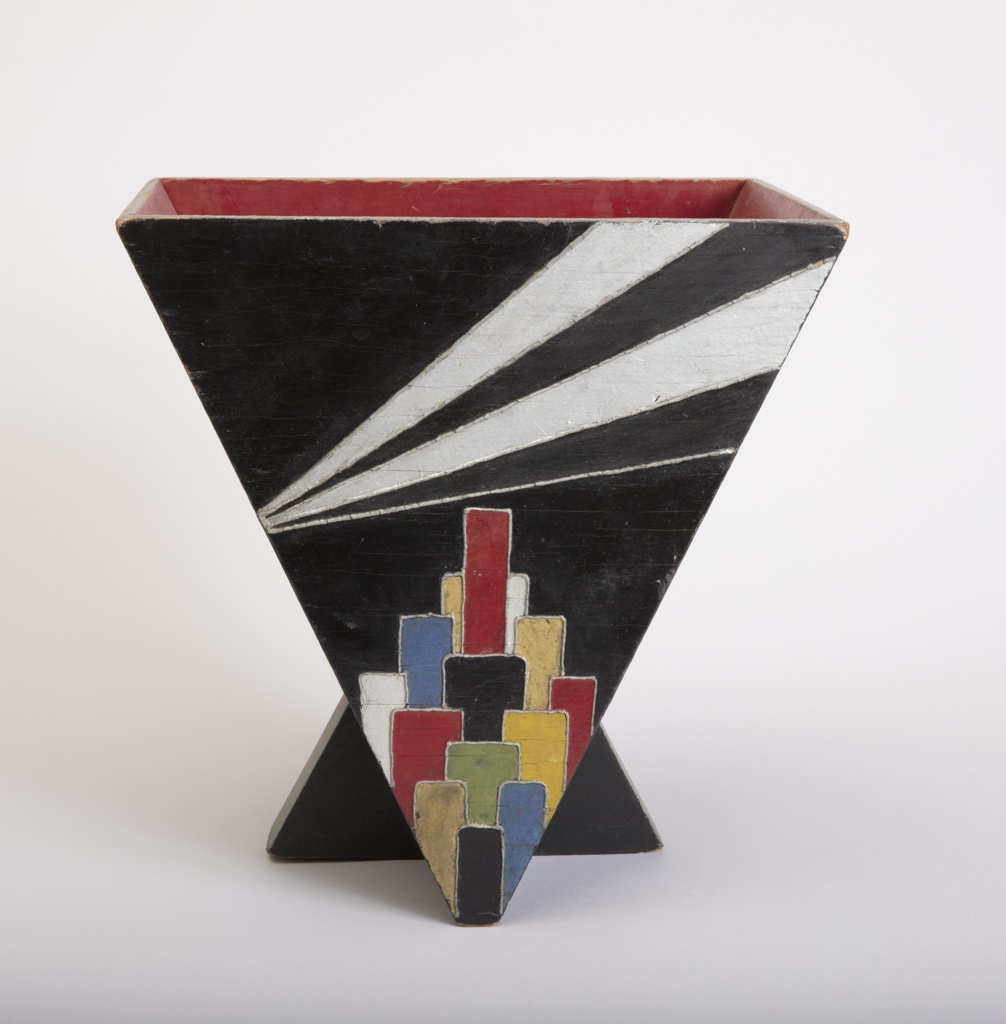Tucked underneath a desk or in a corner of a room a wastebasket sits waiting to collect trash. While an often overlooked item of everyday life, it received the full attention of Donald Deskey. The designer, who established his career in New York in the 1920s, dedicated himself to reimagining the look of the American...
In celebration of Women’s History Month, March Object of the Day posts highlight women designers—and today, patrons—in the collection. While this month we’ve been celebrating women designers, today’s post considers the role played by women patrons in the arts, architecture, and design.[1] Where modernism in America is concerned, one of the most influential actors in...
In ancient Greece, air (along with earth, water, fire, and aether) was one of the five elements thought to comprise all substances. Questions of air quality began to arise in the Middle Ages, even before the composition of the atmosphere was discovered.[1] In the eighteenth and nineteenth centuries, as coal became deeply entrenched in both...
In the early twentieth century, designers often put their work out to sea. Le Corbusier, Swiss-French pioneer of modern architecture, wrote in his seminal 1931 treatise Towards A New Architecture that “a seriously-minded architect (…) will find in a steamship his freedom from an age-long but contemptible enslavement to the past.”[1] The next year, American...
In a 1947 article on frozen food for Popular Mechanics, Andrew Hamilton anticipated that “before long you may see frozen dinners served in hotels, trains, planes, ships, factories, offices and your own home.”[1] Earl E. Hoyt Jr., designer and draftsman at Donald Deskey Associates (DDA) between 1960 and 1965, sought to realize Hamilton’s prophecy in...
The prolific industrial designer Henry Dreyfuss (1904-1972) is one of America’s most important industrial designers. He produced a number of the twentieth century’s most iconic designs, including small scale objects such as the Model 302 telephone and Honeywell’s T-86 thermostat as well as monumental works like the Twentieth Century Limited, a new locomotive whose streamlined exterior...
In 1924, the US Secretary of State advised the French government that the United States would not participate in the 1925 International Exhibition of Modern Decorative and Industrial Arts in Paris, because American manufacturers had “little or nothing to display” that would meet the French admissibility requirements of new inspiration, and originality. Yet, America could...
In 1939, the pioneering industrial designer Donald Deskey, was asked to participate in the Contemporary Industrial Arts Exhibition to be held at the Metropolitan Museum of Art in early 1940. For his project, he designed a prefabricated weekend cabin, called “Sportshack,” depicted in this air-brush rendering. The many innovations in the house included a large...
I recently returned from Cincinnati, where I gave a talk on the early career of Donald Deskey, whose archive is held at Cooper-Hewitt, National Design Museum. I was asked to speak by the University of Cincinnati and by Deskey Associates, headquartered in Cincinnati, in conjunction with their joint installation on Donald Deskey’s design career. Among...








